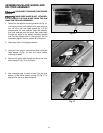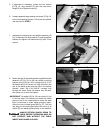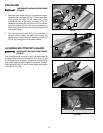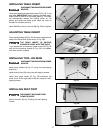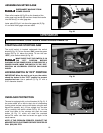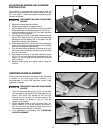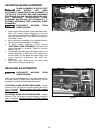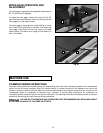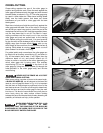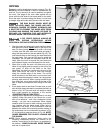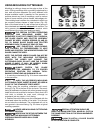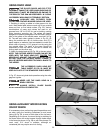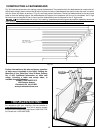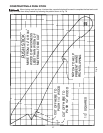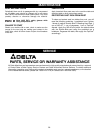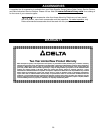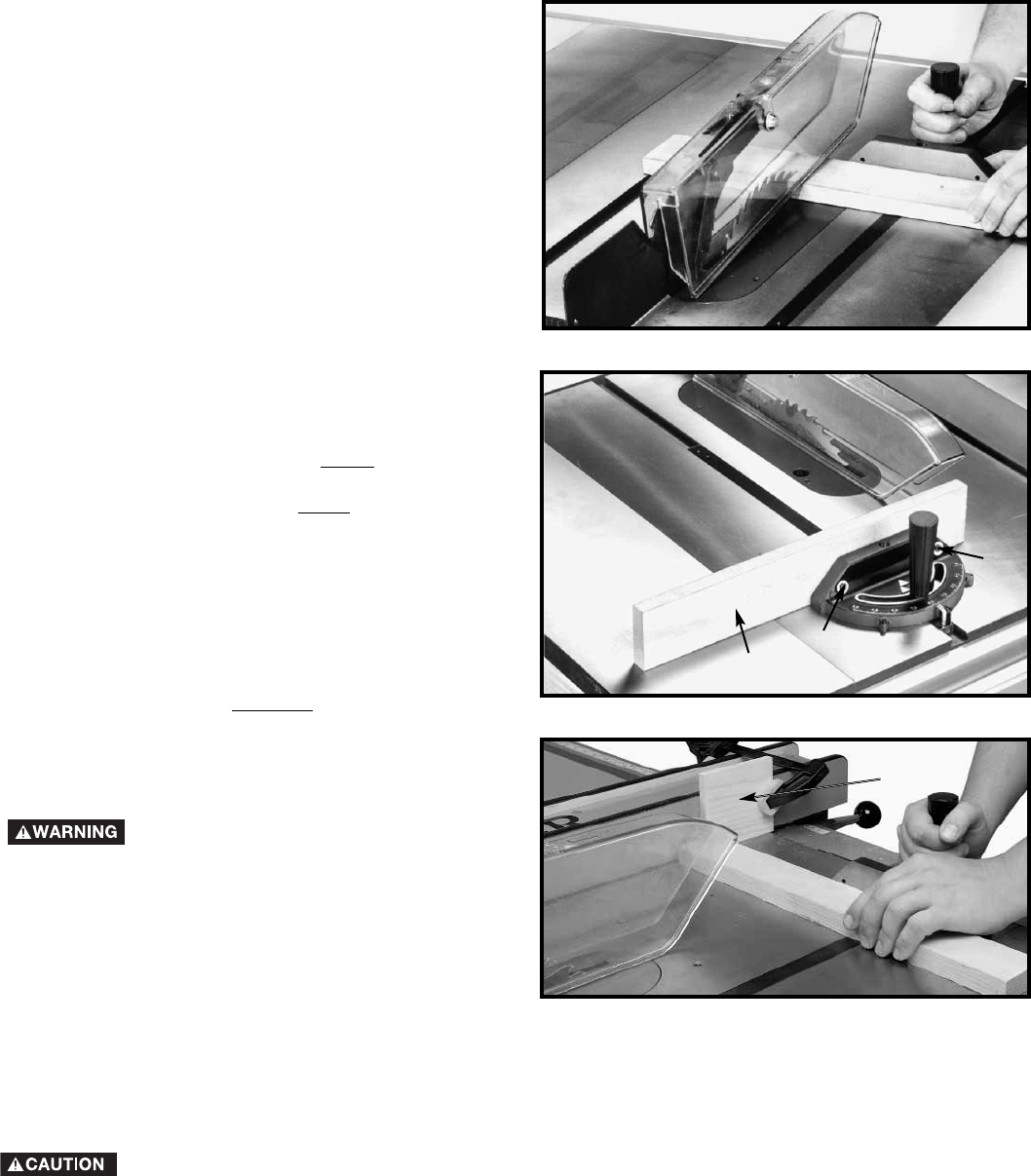
22
WHEN USING THE BLOCK (B) FIG. 44, AS
A CUT-OFF GAGE, IT IS VERY
IMPORTANT THAT THE REAR END OF THE BLOCK BE
POSITIONED SO THE WORK PIECE IS CLEAR OF THE
BLOCK BEFORE IT ENTERS THE BLADE.
CROSS-CUTTING
Cross-cutting requires the use of the miter gage to
position and guide the work. Place the work against the
miter gage and advance both the gage and work toward
the saw blade, as shown in Fig. 42. The miter gage may
be used in either table slot. When bevel cutting (blade
tilted), use the table groove that does not cause
interference of your hand or miter gage with the saw
blade guard.
Start the cut slowly and hold the work firmly against the
miter gage and the table. One of the rules in running a
saw is that you never hang onto or touch the part of the
workpiece that will be cut off. Hold the supported piece,
not the free piece that is cut off. The feed in cross-
cutting continues until the work is cut in two, and the
miter gage and work are pulled back to the starting
point. Before pulling the work back, it is good practice
to give the work a little sideways shift to move the work
slightly away from the saw blade. Never
pick up any
short length of free work from the table while the saw is
running. While blade is running, never
touch a cut-off
piece unless it is at least a foot long.
For added safety and convenience the miter gage can
be fitted with an auxiliary wood-facing (C), as shown in
Fig. 43 that should be at least 1 inch higher than the
maximum depth of cut, and should extend out 12
inches or more to one side or the other depending on
which miter gage slot is being used. This auxiliary
wood-facing (C) can be fastened
to the front of the
miter gage by using two wood screws (A) through the
holes provided in the miter gage body and into the
wood-facing.
NEVER USE THE FENCE AS A CUT-OFF
GAGE WHEN CROSS-CUTTING.
When cross-cutting a number of pieces to the same length,
a BLOCK OF WOOD (B), can be clamped to the fence and
used as a cut-off gage as shown in Fig. 44. It is important
that this block of wood always be positioned in front of the
saw blade as shown. Once the cut-off length is determined,
secure the fence and use the miter gage to feed the work
into the cut. This block of wood allows the cut-off piece to
move freely along the table surface without binding
between the fence and the saw blade, thereby lessening the
possibility of kickback and injury to the operator.
Fig. 42
Fig. 43
C
A
A
Fig. 44
B



